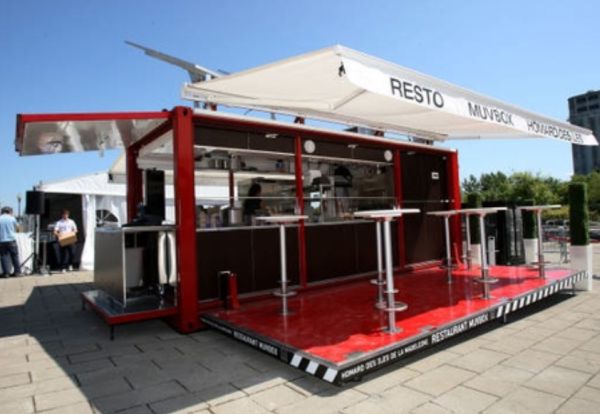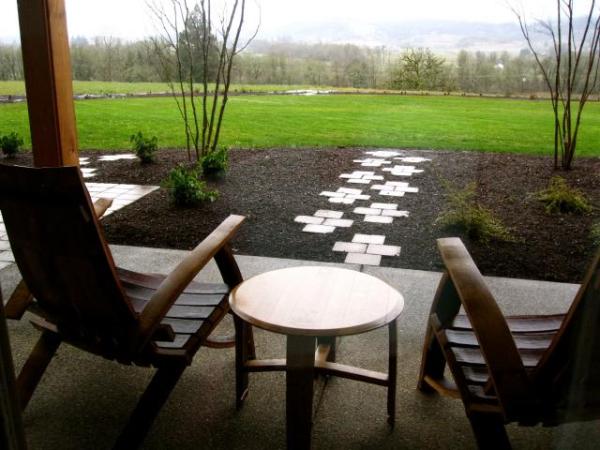
The Trend
With the increasing number of students in the hospitality sector, the concept of pop-up restaurants is gaining importance. They are different from conventional eating hangouts that demand a proper infrastructure and loads of money to spend on them. These supper clubs are operated from private homes or old factory sheds which have ceased to work. The flourishing of pop-up restaurants can be seen in full swing when a festival or an occasion is happening nearby and the pressure on eateries is more than usual.
Pop-up restaurants exhibit different trends in their infrastructural formation and the food they offer. For instance, the pop-up restaurant at Somerset House, owned by Tom Aikens, is characterized by an elegant river view together with cocktails and tempting barbecue preparations. Similarly, if you want to experience eating in a natural ambiance and be part of the merriment on the street during the festive season, the pop-up restaurants, Pearl and First Restaurant of Jun Tanaka and Mark Jankel respectively, will be perfect for their street kitchen culture. Sometimes, the chefs also change every week in some pop-up restaurants to keep the novelty in the appeal of the restaurant and the food served every time.
One such instance is that of the Lun Shan restaurant located in Mission Street Ford. A predominantly Chinese restaurant, Thursdays and Saturdays are totally different as guest chefs are invited by Myint, the brains behind the restaurant, to offer to his guests different cuisines. Thus, once you visit the restaurant you may be served fried chicken with beef jerky while at other times, coconut with pecans could also be in your food platter. These food junkets are temporary and are closed down after a week or a month, as decided by the owners. But they may open later, again as decided by the owners. The only means by which you can keep a track on pop-up restaurants and their recent venues is through the internet and online social clubs.
Why the trend
The trend of pop-up restaurants is on the rise nowadays due to several factors, one of them being because it provides students, young chefs and amateur chefs the professional platform to get into the hospitality sector in an official and legal way without spending huge money. Some of the chefs use underused or abandoned kitchens as their workplaces to offer exquisite dishes to customers. Such an instance is that of Saison, whose owner is Mark Bright, who works along with his whole timer chef, Joshua Skenes. This eatery is more or less commercial in nature and operates behind the Stable Cafe located in Folsom Street. This nascent project of only two weeks old is fetching a lot of fortune for itself already.
There are other people in this profession too who are short of money and want to accumulate enough wealth that will enable them to open up an eatery in the future. Pop-up restaurants are suitable for them as they can cook professionally, earn sufficient money and get to know the reaction of people towards the food they serve. Take the example of Aseged of Coffee Bar, which operates at the Mission. This restaurant specializes in fusion dishes of Mediterranean variety with that of an Ethiopian flavor at an average cost of around $18.
There are people too who think that pop-up restaurants are the most elegant way to collect money for bigger causes. Myint of Mission Food Street gathered as much as nearly $22,000 from customers which he then donated to several charities.
What is in for us
The most important factor that emerges from the case study on pop-up restaurants is that it is a great attraction for investors. Since the chefs in these restaurants work in their freedom and are free to choose and decide the menu, there is always a uniqueness in the food that is being offered in these places. Here, the competition between pop-up restaurants lies in the variety and specialty of food that can be offered that will grab more customers than other eateries. It logically follows, then, that there is competition among investors too to invest in the right pop-up restaurant to gain more returns.
Another thing that is quite challenging for young chefs is that of setting up a full fledged restaurant as it involves a lot of capital investment in order to ensure proper infrastructure. There are other costs involved too, like regular labor payment, maintenance cost, paying of certain taxes and contingencies. Hence, only those with sufficient monetary strength can take up the risk while those with comparatively low financial strength have to wait patiently till a bank loan is sanctioned. But pop-up restaurants do not have such huge financial involvements. Moreover, while opening up a normal restaurant hints at a number of legal criteria to be fulfilled, permits and licenses to be sanctioned and a number of revenues to be paid, pop-up restaurants are a perfect form of legalized bodies that are exempted from such stringent legal hassles.
Another driving factor for pop-up restaurants is that in a conventional restaurant, customers have to stick to the menu that the owners have been making for years since different clients revisit a particular restaurant due to a preferred dish. But customers can expect surprises and a different ambiance when they eat at pop-up restaurants. Thus, chefs are at liberty to cook dishes which are reflections of their creativity and not out of sheer compulsion. This is another great merit in the hat of pop-up eateries.
The future
When the worldwide recession hit every money making institution, pop-up restaurants remained virtually untouched due to their low infrastructural cost, fewer numbers of labor involvement and requirement of lesser space. The innovative dishes never fail to attract customers so the inflow of clients everyday is also ensured. It is therefore being predicted that the low investment and high returns obtained from this venture will encourage more and more people to open up pop-up restaurants in the days to come.




